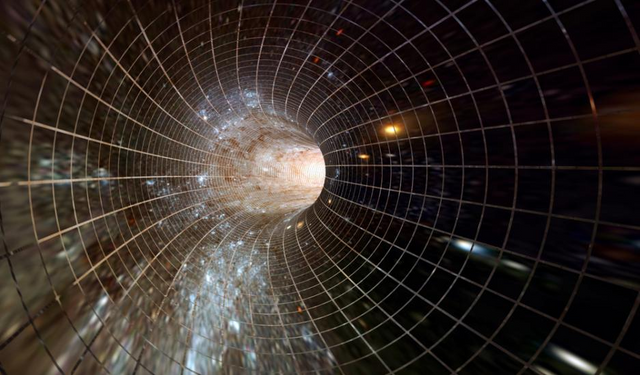Yes, time travel is possible. this is how

Time travel is one of the eternal themes in fiction. Probably we will never stop dreaming of going into the future or in the past. And the most fantastic thing is that time travel is possible.
Let's start with the almost impossible
Here's the bad news. Probably we can not go back in time and see how the Egyptians built the pyramids. In the past century, scientists have presented a number of theories that make it plausible to jump into the future. The return of time in regret is much more complicated. But not necessarily impossible.
Einstein laid the foundations for much of the theoretical science that today explores the possibility of traveling over time. Of course, scientists like Galileo and Poincaré before him have made a valuable contribution, but the theories of general and special relativity have drastically changed our understanding of time and space. Thanks to these two credible theories, modern scholars believe that time travel is possible.
One of the possibilities for this is the so-called. "Wormhole", also known as Einstein-Rosen Bridge. Together with physicist Nathan Rosen, in 1935 Einstein came out with the scientific assumption that there are "wormholes", and then many scientists add their theories to the way they should work. Kip Thorn and Stephen Hawking are among the most famous authors of such theories.
Let's assume there are wormholes. In the late 1980s Thorne declared that a wormhole could be turned into a time machine. According to the general theory of relativity, the wormhole can act as a bridge over the spacetime that creates a shortcut between two distant points. It is believed that a certain type of wormhole would allow time travel in any direction if we can approach the speed at one end to the speed of light and then return it to its original state. At the same time, the other end will remain motionless. Due to the effect of time extension, the moving end will "grow older" faster than the moving end.
In this method, however, there are several stumbling blocks. The main thing is the simple fact that we need a method of creating wormholes and that once created, the wormhole allows us to go back to the past only until it is created. So we certainly will not see how the pyramids are built.
The other major problem is that we need to accelerate the other end to a speed close to the speed of light. In his founding work on the wormholes of 1988, Thorne and his colleagues suggest that advanced civilization creatures could produce this movement by pulling the right-hand corner gravitationally or electronically. " For the time being, we can not do that.
What we can do is travel to the future - but only to a certain extent.
Almost certainly possible
In recent years, we have seen many of Einstein's fantastically sounding theoretical theatrical productions. One of the most exciting is the previously mentioned theory of time extension. Although for decades we have developed technologies based on this theory, a recent experiment ultimately proved that the extension of time is a real phenomenon. And also a phenomenon that allows us to travel in the future.
In short, it is about the idea that time passes slower for a moving clock than for a clock that stands in one place. The force of gravity also affects the difference in time. The greater the gravity, the greater the difference in time. Black holes, like the one in the Interstellar film , for example, would produce a massive amount of time extension due to their extreme gravitational pull.
Scientists working on space programs have been working on this effect for years. That's why the International Space Station's clocks count time a little slower than Earth's clocks. Because the ISC moves so quickly under the influence of weaker gravity, time is running faster. That's why no Earth clock is absolutely accurate, because the effect of time expansion means that time flows more slowly to the surface of the Earth.
Another example is GPS satellites. The GPS chip on your smartphone works because 24 satellites run around the globe at any time to triangulate your location based on how long the time-tagged information travels to and from your device.
However, when building the system, scientists have found that atomic clocks on GPS satellites are actually very slight forward as they are moving in orbit at 9,000 miles per hour. They lose 8 microseconds a day. This is a difficult to perceive difference, but sufficient to confuse the location data. That's why these watches make corrections that are responsible for the effects of relativity.
The consequences are incredible. What if we bring this to the extreme? If you jump into a spacecraft that flies super fast, time will pass slower for people on Earth. You can make a tour of the galaxy and return to Earth in the future. In fact, this is exactly what happens in the "Planet of the Apes".
The question remains: can we really bring things to extremes? And is it possible to move back in time? We can not understand. It may be that some future discovery would reject today's theories. So far, we have not figured out how to build a wormhole or test any of the proposed methods in practice.
The only thing we can do is look for travelers in time among us. That's why we do not need either laboratories or spacecrafts.

You got a 1.91% upvote from @postpromoter courtesy of @martinio6!
Want to promote your posts too? Check out the Steem Bot Tracker website for more info. If you would like to support the development of @postpromoter and the bot tracker please vote for @yabapmatt for witness!
To listen to the audio version of this article click on the play image.

Brought to you by @tts. If you find it useful please consider upvote this reply.